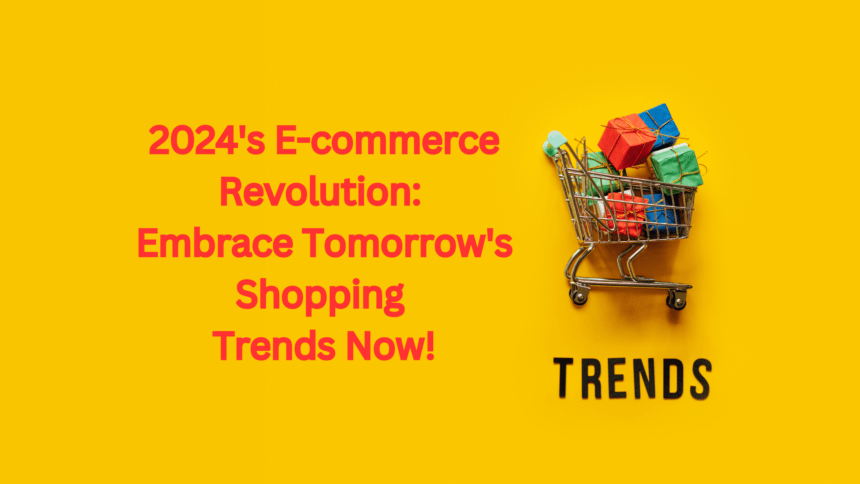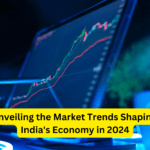Introduction
The Ever-Evolving Landscape of E-commerce
The realm of e-commerce is in perpetual flux, with innovations constantly reshaping the way we shop and interact online. As we approach 2024, several transformative trends are set to redefine this dynamic industry. Remaining abreast of these developments is paramount for businesses aiming to thrive in a competitive market. The future of e-commerce trends is not just a distant concept but a tangible reality that savvy businesses must prepare for today.
Importance of Staying Ahead of Trends
Anticipating and adapting to upcoming trends not only positions businesses for success but also enhances customer satisfaction. By staying ahead, companies can leverage new technologies and methodologies to offer superior shopping experiences. The future of e-commerce trends will be dominated by advancements in AI, AR, sustainability, voice commerce, and social media integration. Businesses that embrace these innovations will not only survive but thrive in the competitive e-commerce landscape.
1. Artificial Intelligence and Machine Learning Integration
Personalized Shopping Experiences
Artificial intelligence (AI) and machine learning (ML) are revolutionizing e-commerce by delivering highly personalized shopping experiences. These technologies analyze vast amounts of data to understand individual customer preferences, enabling tailored product recommendations and marketing strategies. In the future of e-commerce trends, AI will play an even more critical role. Advanced algorithms will predict what customers want before they even realize it themselves, creating a seamless and intuitive shopping experience.
AI-Powered Customer Service
AI is also enhancing customer service through sophisticated chatbots and virtual assistants. These tools provide instant support, answer queries, and resolve issues, improving customer satisfaction and operational efficiency. As we look towards the future of e-commerce trends, AI-powered customer service will become more nuanced and human-like, capable of understanding and responding to complex customer emotions and needs. This will create a more engaging and satisfactory customer service experience, fostering loyalty and repeat business.
2. Augmented Reality (AR) and Virtual Reality (VR) Shopping Experiences
Enhancing Online Product Visualization
AR and VR technologies are bridging the gap between online and offline shopping by allowing customers to visualize products in a real-world context. Shoppers can see how furniture fits in their living spaces or how a garment looks on them without leaving their homes. The future of e-commerce trends will see these technologies become even more sophisticated, offering hyper-realistic simulations that provide an almost tactile shopping experience. This will not only enhance customer satisfaction but also reduce return rates, as customers can make more informed purchasing decisions.
Virtual Try-Ons and Fitting Rooms
Virtual try-ons and fitting rooms are becoming increasingly popular, offering a unique and interactive shopping experience. These innovations reduce the uncertainty associated with online purchases, leading to higher conversion rates and fewer returns. As part of the future of e-commerce trends, virtual try-ons will become more prevalent and sophisticated. Advanced AR and VR technologies will allow customers to try on multiple items simultaneously, mix and match outfits, and receive real-time feedback on fit and style. This will revolutionize the online shopping experience, making it as immersive and satisfying as shopping in a physical store.
3. Sustainable and Ethical E-commerce Practices
Eco-friendly Packaging Solutions
Consumers are becoming more environmentally conscious, prompting e-commerce businesses to adopt sustainable practices. Eco-friendly packaging solutions, such as biodegradable materials and minimalistic designs, are gaining traction. The future of e-commerce trends will see a significant shift towards sustainability, with businesses increasingly adopting green practices. This will not only help protect the environment but also attract eco-conscious consumers who prioritize sustainability in their purchasing decisions.
Transparent Supply Chains
Transparency in supply chains is also critical, as customers demand to know the origins of their products. Companies that provide clear information about sourcing, manufacturing processes, and labor practices build trust and loyalty. The future of e-commerce trends will see an increased emphasis on transparency, with businesses adopting blockchain and other technologies to provide verifiable and immutable records of their supply chains. This will enhance trust and loyalty among consumers, who will be assured of the ethical and sustainable nature of their purchases.
4. Voice Commerce Expansion
The Rise of Voice-Activated Shopping
Voice commerce is on the rise, with more consumers using smart speakers and voice assistants to make purchases. This trend necessitates that businesses optimize their online stores for voice search and develop voice-activated shopping capabilities. The future of e-commerce trends will see voice commerce become even more prevalent, with advancements in natural language processing making voice-activated shopping more intuitive and user-friendly. This will revolutionize the way consumers interact with e-commerce platforms, making shopping more convenient and accessible.
Optimizing for Voice Search
Optimizing for voice search involves adjusting SEO strategies to account for natural language queries. This ensures that products and services are easily discoverable by voice assistant users. As part of the future of e-commerce trends, businesses will need to develop sophisticated voice search optimization strategies. This will involve understanding the nuances of voice search queries and ensuring that their e-commerce platforms are optimized to respond to these queries accurately and efficiently. This will enhance the shopping experience for consumers and drive higher conversion rates.
5. Social Commerce Evolution
Shoppable Social Media Posts
Social commerce is evolving with platforms like Instagram and Facebook offering shoppable posts. This seamless integration of social media and e-commerce enables users to make purchases directly from their social feeds. The future of e-commerce trends will see social commerce become even more integrated and interactive. Advanced algorithms will enable more personalized and relevant product recommendations, making it easier for consumers to discover and purchase products they love.
Influencer-Driven Sales
Influencer marketing continues to drive e-commerce sales. Collaborations with influencers help brands reach wider audiences and build credibility through trusted endorsements. The future of e-commerce trends will see influencer marketing become even more sophisticated, with advanced data analytics enabling businesses to identify and collaborate with the most effective influencers for their target audiences. This will drive higher engagement and conversion rates, making influencer marketing an indispensable part of e-commerce strategies.
Conclusion
Embracing the Future of E-commerce Trends
The future of e-commerce is brimming with potential, driven by technological advancements and evolving consumer preferences. Embracing these trends will enable businesses to stay competitive and meet the ever-changing demands of the market. The future of e-commerce trends will be dominated by advancements in AI, AR, sustainability, voice commerce, and social media integration. Businesses that embrace these innovations will not only survive but thrive in the competitive e-commerce landscape.
Preparing for the Next Wave of Innovations
To thrive in this dynamic landscape, businesses must be agile and forward-thinking. By anticipating and adapting to these trends, they can position themselves at the forefront of the e-commerce revolution, ready to seize new opportunities as they arise. The future of e-commerce trends is not just a distant concept but a tangible reality that savvy businesses must prepare for today. By embracing these trends, businesses can create superior shopping experiences, foster customer loyalty, and drive long-term success in the ever-evolving world of e-commerce.
For more content follow Humstory.













